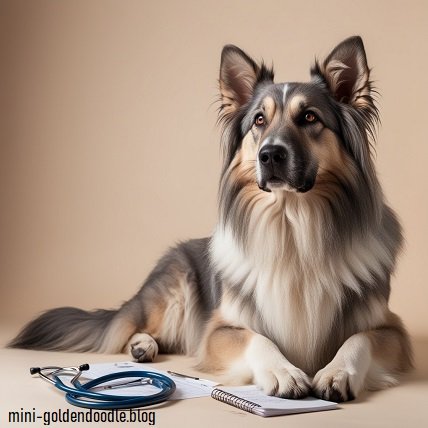Overview
For ages, central asian shepherd dog health problems have been respected for their ability to defend sheep due to their formidable size, strength, and guarding instincts. Their sturdy nature and rough exterior frequently give the impression that they are unbreakable. They are prone to certain health issues, though, just like any breed, which may lower their quality of life.
Central Asian Shepherd Dog Overview
Large and strong, the central asian shepherd dog health problems, sometimes referred to as Alabai, was first created to keep cattle safe from harm. They are renowned for their intellect, devotion, and guardian instincts. Their thick double coat and huge, powerful frame are made to survive hard weather and rough terrain. Their physical toughness does not shield them from health problems, which can range in intensity.
Overview of Hip Dysplasia
Many large dog breeds, including the Central Asian Shepherd, are prone to hip dysplasia. This hereditary condition is characterized by pain, lameness, and maybe arthritis when the hip joint does not fit into the hip socket correctly. From minor discomfort to excruciating pain that impairs movement, symptoms can vary widely.
Hip dysplasia symptoms and diagnosis
In CASDs, indications of hip dysplasia can include trouble getting up, a waddling stride, resistance to exercise, and soreness when the hip region is touched. X-rays are usually used in the diagnosis process to determine the extent of joint abnormalities and a veterinarian examination. A timely diagnosis is essential for good treatment.
Hip dysplasia treatment and management
Hip dysplasia can be treated with weight control, physical therapy, altered exercise routines, and, in extreme situations, surgery such femoral head osteotomy or hip replacement. Maintaining a healthy weight is crucial for minimizing the strain on the hips, and joint supplements and anti-inflammatory drugs can aid with pain management.
Elbow Dysplasia: Essential Information
Similar to hip dysplasia, elbow dysplasia is a prevalent orthopedic condition in large breed dogs. It includes the elbow joint developing abnormally, which can result in arthritis and lameness. In addition to rapid growth, various environmental variables and genetics can also contribute to elbow dysplasia.
Determining the Elbow Dysplasia Diagnosis
Elbow dysplasia is characterized by reduced range of motion, pain upon manipulation of the elbow, and lameness in the front limb. X-rays and a physical examination are typically used in the diagnosis process. CT scans and other advanced imaging methods can be utilized for a more thorough evaluation.
Handling Distal Bending
The goals of treating elbow dysplasia are to keep the joint functional and to relieve pain. Medication, physical therapy, and weight control may be part of this. To enhance mobility and quality of life in extreme situations, surgical alternatives such as elbow replacement or arthroscopy may be taken into consideration.
In summary
The extraordinary central asian shepherd dog health problems has a long history of devotion and protection. Like all breeds, they do, however, have certain health issues. Owners can guarantee their CASDs live long, healthy, and happy lives by being aware of the common health issues that this breed is known for and taking proactive measures to control and avoid them. The secrets to maintaining these amazing dogs in top shape are proactive health management, appropriate nutrition, and routine veterinary treatment.
FAQ
Which health issues affect central asian shepherd dog health problems the most frequently?
Hip dysplasia, elbow dysplasia, stomach dilatation-volvulus (bloat), allergies, mitsuri.net thyroid disorders, and dental concerns are among the most prevalent health issues. Frequent veterinary examinations can aid in the early diagnosis and treatment of certain illnesses.
How can I keep my Central Asian Shepherd dog from developing hip dysplasia?
Keeping a healthy weight, limiting exercise while the dog is still a puppy, and feeding a balanced food are preventive strategies. A dog’s routine examinations and screenings can aid in the early detection of hip dysplasia.
In the event that my central asian shepherd dog health problems exhibits bloat, what should I do?
Bloat is a serious health concern. Seek emergency veterinarian care if you observe symptoms including a bloated abdomen, drooling, or signs of distress. It is imperative to intervene early for the best results.

